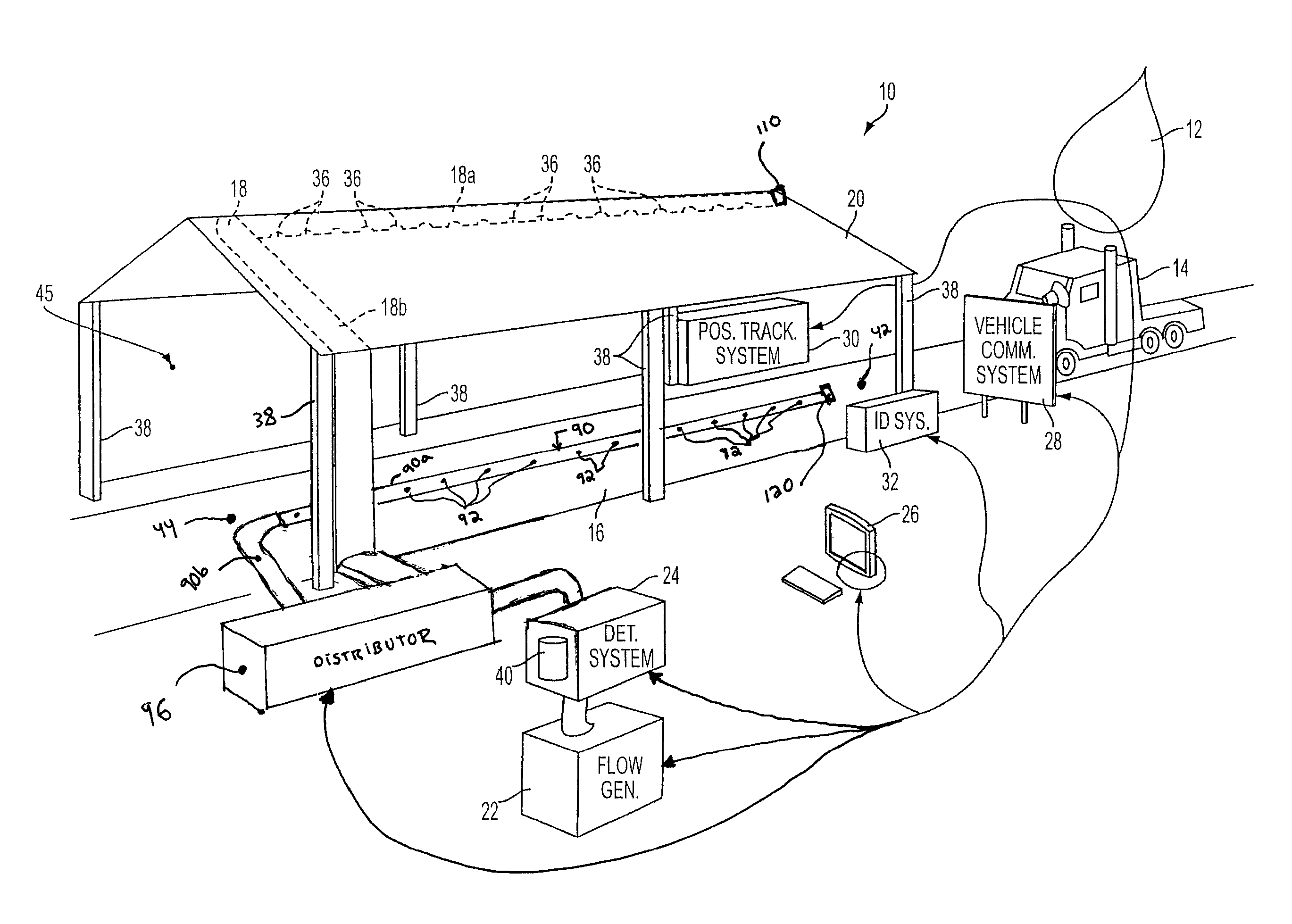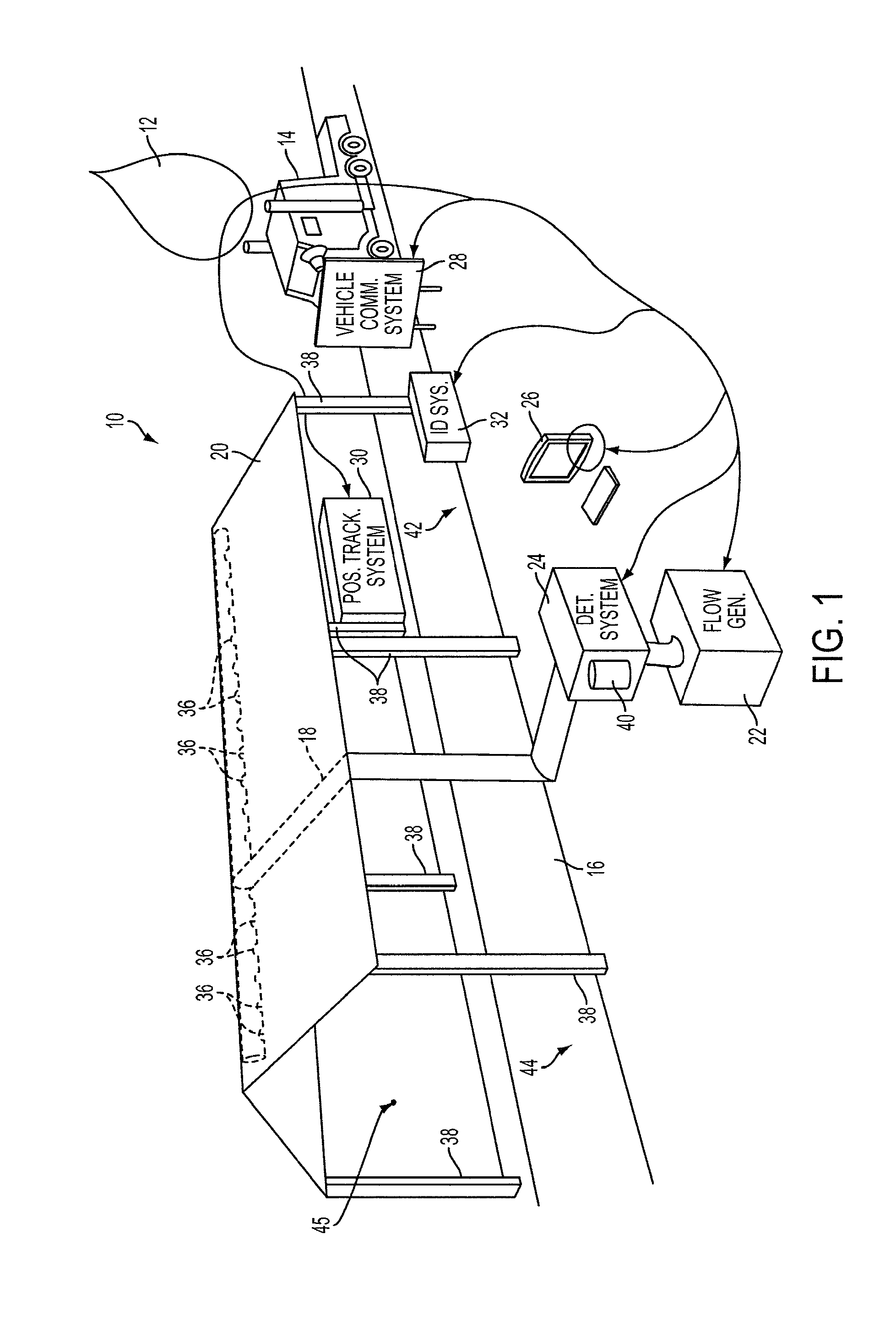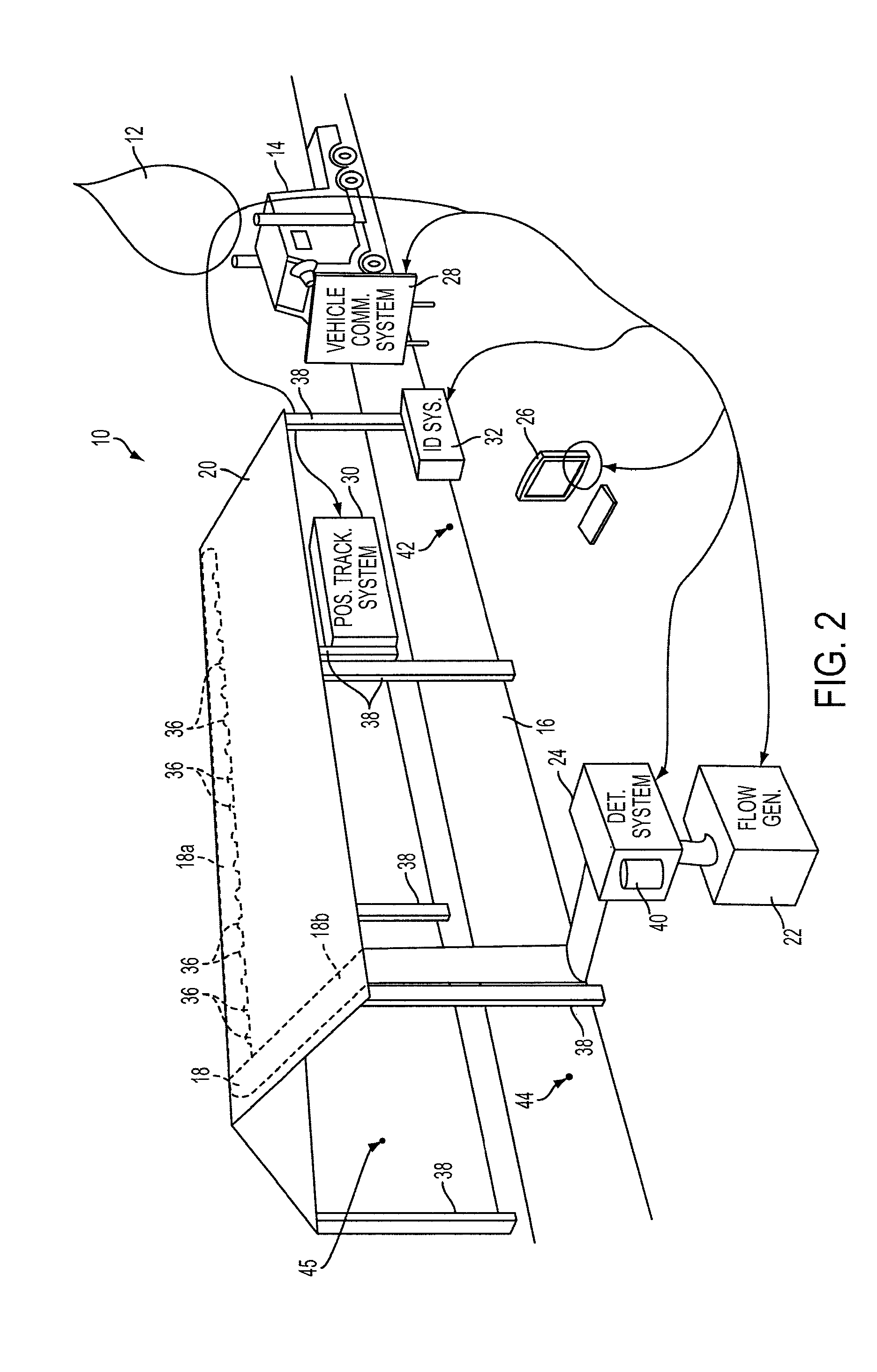System and method for quantifying the presence of components in the exhaust of commercial and/or heavy-duty vehicles
a technology for commercial and/or heavy-duty vehicles, applied in the field of extractive sampling systems and quantification of can solve the problems of not accurately quantifying the presence of components in the exhaust of commercial and/or other heavy-duty vehicles, and the measurement acquired often does not represent emissions, etc., to achieve suppressed inaccuracy and/or enhanced accuracy. the effect of precision
- Summary
- Abstract
- Description
- Claims
- Application Information
AI Technical Summary
Benefits of technology
Problems solved by technology
Method used
Image
Examples
Embodiment Construction
[0035]FIG. 1 illustrates a system 10 for analyzing an exhaust plume 12 of a vehicle 14 traveling on a roadway 16 under actual operating conditions, in accordance with one or more implementations of the invention. It should be appreciated that exhaust leaving the exhaust pipe(s) of moving vehicle 14 (e.g., via exhaust “stacks” of a semi-trailer or bus) is entrained in the vehicle's turbulent wake and continues to dissipate as vehicle 14 travels away. Despite the present turbulence, the dissipation of the exhaust will have a directionality associated with one or both of the location at which the exhaust is emitted and / or the direction in which it is propelled by momentum upon being emitted. For example, some commercial and / or heavy-duty vehicles generally emit exhaust at an elevated position and / or propel emitted exhaust either upwards or to the side. As a result, remote emissions sensing systems designed to detect emissions for low-emitting vehicles (e.g., typical passenger automobil...
PUM
| Property | Measurement | Unit |
|---|---|---|
| pressure | aaaaa | aaaaa |
| length | aaaaa | aaaaa |
| time | aaaaa | aaaaa |
Abstract
Description
Claims
Application Information
 Login to View More
Login to View More - R&D
- Intellectual Property
- Life Sciences
- Materials
- Tech Scout
- Unparalleled Data Quality
- Higher Quality Content
- 60% Fewer Hallucinations
Browse by: Latest US Patents, China's latest patents, Technical Efficacy Thesaurus, Application Domain, Technology Topic, Popular Technical Reports.
© 2025 PatSnap. All rights reserved.Legal|Privacy policy|Modern Slavery Act Transparency Statement|Sitemap|About US| Contact US: help@patsnap.com



